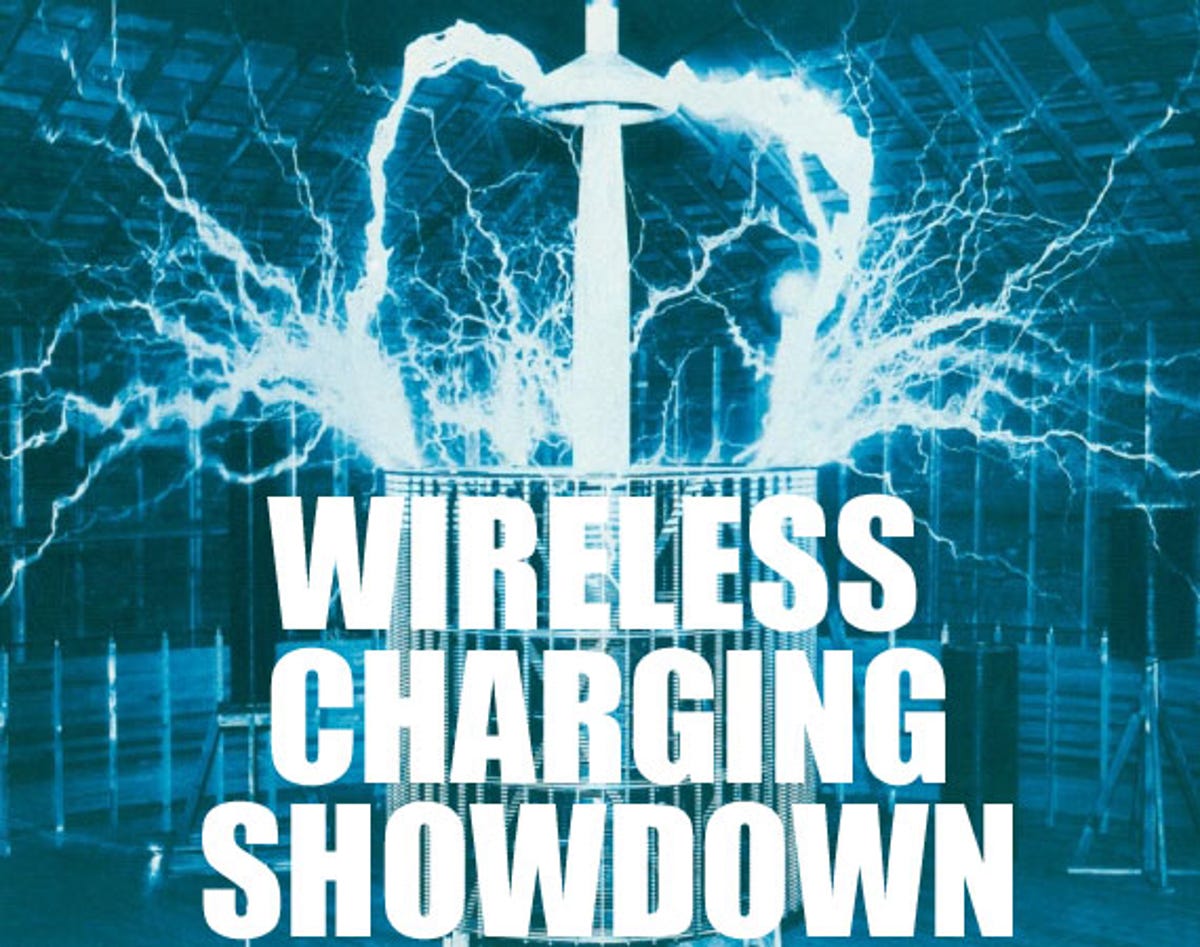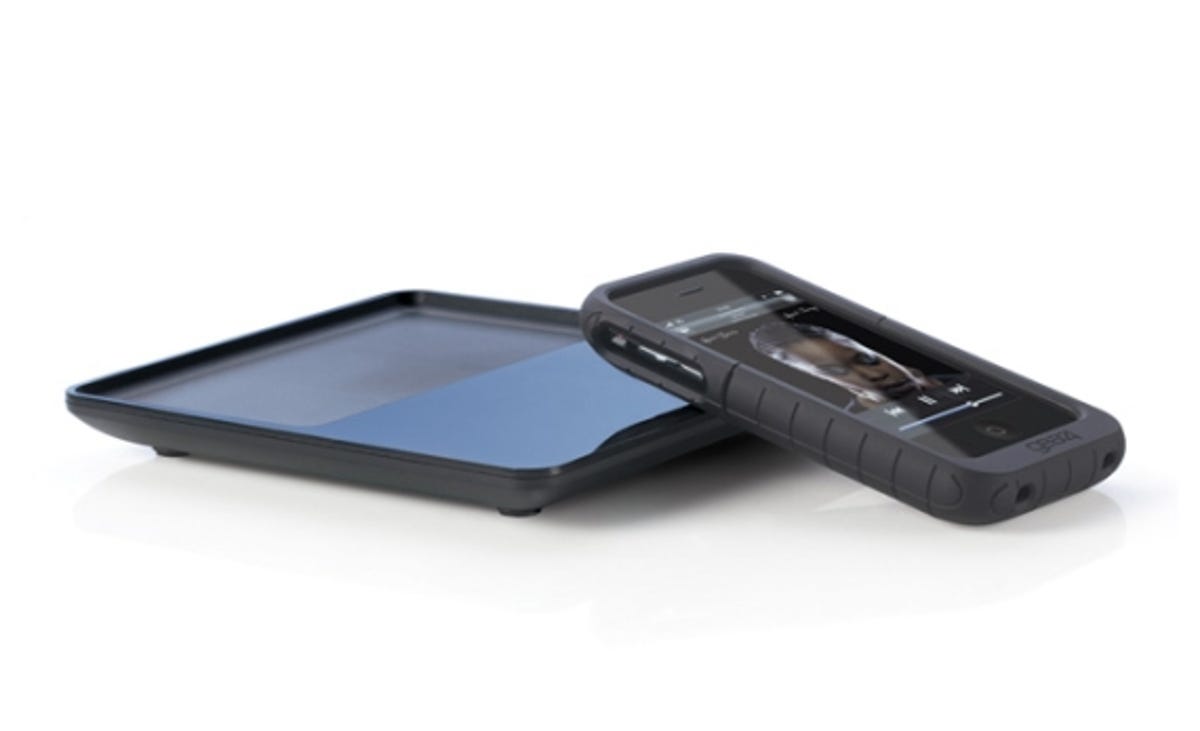
With smart phones chomping batteries like Pac-man popping pills, charging is the newest challenge for gadget-makers. If we could get some juice everytime we dropped our phone on the table, maybe we could make it through the day without being chained to our wall wart or USB cable.
So it’s no wonder that wireless charging options are springing up faster than 80s-inspired synth-pop songstresses. We’ve taken each of them for a good, hard test drive and now we can share our wire-free wonder with you.
But first, ask yourself if you really need to shell out for one of these beauties. Even if you have a power-gorging iPhone, for example, you probably could just drop it on a dock for a tenth the price of a wireless solution. Palm Pre owners can have a little gloat here with their own wireless charging nubbin, the touchstone.
But if you live in a house with several smart phones, MP3 players, Bluetooth headsets and handheld games consoles, a wireless charging mat really starts to make sense. There’s no more clogged plug sockets, and everyone can just chuck their stuff on the pad without fighting over the microUSB cable.
All the chargers we tested did the job as promised, charging a range of phones and other devices quickly and reliably. So we’ve focused on ease of use, design and practicality in our comparison.
Click ‘Continue’ to check out the first visitor to the magnetic induction junction.


Powermat isn’t the first wireless charging product, but it’s the first that’s made much of a splash, thanks to the huge advertising tsunami that saw its cable-wrapped spokesmodel on every Tube poster from here to Cockfosters.
Powermat’s also the most attractively designed of the current crop of wireless charging options, with a consistent industrial design that means we wouldn’t be embarrassed to have the mat on our desktop.
Unfortunately, the receivers aren’t quite as good-looking as the mat. Currently you can get receivers on an iPhone case, an iPod dock, a BlackBerry battery cover, or a Nintendo DS back panel. For other devices, there’s a puck that connects to your gadget’s charging jack with a selection of tips that should fit pretty much everything.
The BlackBerry option is the sleekest, but the raised receiver pad and giant Powermat logo aren’t the impressive ‘badge of tech’ the company had hoped for. The good news is Powermat is releasing new receivers that are more subtle-looking. We’re also glad to hear Powermat is coming out with batteries for most phones that have the receiver built in. You do lose some battery capacity, but you can’t even see the receiver and you don’t have to use a case on your iPhone, for example.
Powermat says it charges as fast as your standard charger, and we had no trouble using it. It uses magnets to align the receiver with the mat, and beeps when it’s connected. Thankfully, you can turn off the sounds if they start to drive you nuts. In fact, Powermat seems to have thought of everything — there’s even a USB port on the mat so you can charge with a cable, if that’s all you have handy.
We love this company’s ambition — it’s already announced mats with built-in batteries and the ability to charge high-powered gadgets such as laptops. But it’s something of a maverick, choosing to ignore the Wireless Power Consortium’s bid to set up standards, in order to get its products out faster. That means once you commit to Powermat, it’s unlikely to be compatible with other mats and receivers.
Powermat’s not cheap — you’re looking at £70 for a mat, £34 for an iPhone case, and £30 for the puck with switchable tips. Nevertheless, if you’re looking to invest in a wireless charging system for the long term, we think Powermat promises to offer slick, well-designed products and plenty of innovation to come.
You can buy it from the Powermat Europe Web site.


If Powermat is the BMW of wireless charging — slick, reliable and expensive — then WildCharge is the scrappy Beetle. It doesn’t have many bells and whistles, and it looks a bit janky, but it does what it’s meant to do and it’s more affordable.
Like Powermat, WildCharge requires a receiver on your phone, and iPhone and BlackBerry cases are available, with more on the way. You also have the option of a disk that connects to the charging port on your phone, with a selection of different tips, or an adaptor that sticks to any phone and permanently connects to its charging jack.
Unlike Powermat, WildCharge uses conduction to charge, so the receivers have conductive contact points that must be touching the pad. It’s not as cool-looking as Powermat’s contactless inductive method, but it works fine and the receiver can be placed on the pad in any position. A blue LED lets you know when the device is charging.
We thought the iPhone case was ugly, with a big bulge to accommodate the phone’s proprietary charging jack. The adaptable disk is small, simple and convenient to use, however. Although it’s not as nice-looking as the Powermat’s puck with its handy cord wrap and separate tip storage container, we found we ended up using it more often to quickly connect to our huge variety of different devices.
It may seem crazy to plug in a wireless adaptor every time you want to charge your gear — it’s hardly 100 per-cent wireless — but with lots of different gadgets on the go, it’s still significantly more convenient than sorting out all the power adaptors and plug sockets.
The WildCharge is one of the cheapest wireless options, costing £40 for the pad, £30 for an iPhone case and £15 for the universal adaptor disk. If you want to pick up a wireless charger that does what it says on the tin and won’t clean out your bank account, the WildCharge is a good choice.
Check out the WildCharge UK Web site for more info and links to shops where it’s available.


Gear4 is targeting iPhone-ers only with the PowerPad, offering a package deal with a case and a wireless charging surface.
Rather than using magnets to align the inductive receiver, like the PowerMat does, the PowerPad relies on a trough in the pad to keep the phone in place — although we found it sometimes struggled to stay connected. That meant the beeps which alert you to the connection, which can’t be turned off, occasionally disrupted the quiet of our house at odd moments.
The PowerPad isn’t cheap — the pad and case cost £80 from the Gear4 Web site. But it’s sleek-looking and easy to use, and we did come to enjoy having a fully topped-up iPhone at our beck and call. We just wish the case included a built-in battery, a pass-through socket so we could still use the iPhone’s connector, or similar iPhone-specific features. Without them, it doesn’t set itself apart from other, more flexible options. Still, it would make a good gift for the iPhone-lover who has everything.


On first glance, this is the extremely poor man’s wireless charger — it’s really just a big charging dock that has space for three interchangeable tips. But it makes a freaky kind of sense — why mess with cases, adaptors and receivers when you could just pop your gadgets on a USB connector like nature intended?
It certainly gets rid of your heap of wall warts, and it even has an on/off switch. But unlike purpose-built docks, which align your gadget front and centre so you can see the screen, all the Idapt’s docks point the same way. That leaves our gear with side- or top-mounted charging jacks facing backward, upside-down and sideways.
We also found it hard to quickly remove gadgets in case of a phone call, for example, and the tips are big and tricky to swap if you’ve got more than three devices.
We’re torn between the simplicity of the Idapt and its ugliness. It lacks the cool factor of the wireless options, but it’s much cheaper, and it will tackle your cable congestion.
An Idapt with four tips of your choice costs €40 (£35) from the Idapt Web site, and ironically, you’ll need an adaptor for the European power cable.



